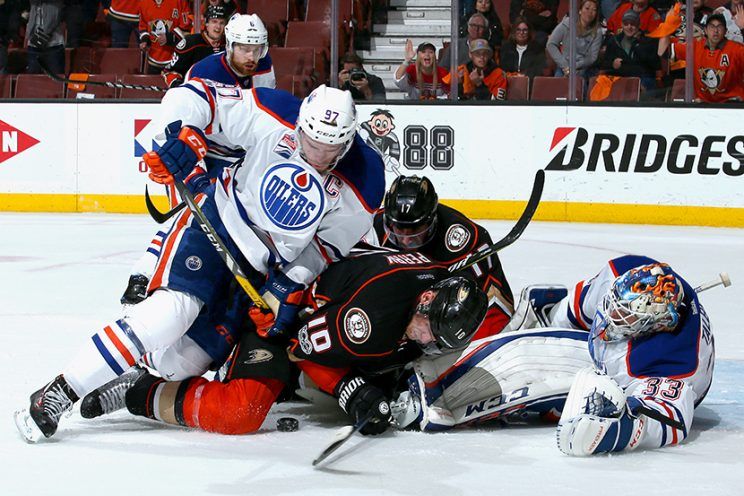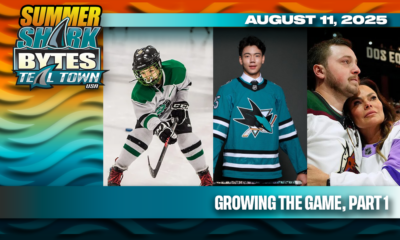
The Issue at Hand…
The goalie interference rule has been the subject of much debate, mainly because the NHL and Situation Room in Toronto can’t make up their damn minds about how they want to define the rule. In fact, it’s everything about the controversy of this rule and how the League (inconsistently) rules every situation. Let’s break it down.
What Exactly Is Goalie Interference?
According to Rule 69.1 of the rule book, the rule clearly states:
69 – Interference on the Goalkeeper 69.1 Interference on the Goalkeeper – This rule is based on the premise that an attacking player’s position, whether inside or outside the crease, should not, by itself, determine whether a goal should be allowed or disallowed. In other words, goals scored while attacking players are standing in the crease may, in appropriate circumstances be allowed. Goals should be disallowed only if: (1) an attacking player, either by his positioning or by contact, impairs the goalkeeper’s ability to move freely within his crease or defend his goal; or (2) an attacking player initiates intentional or deliberate contact with a goalkeeper, inside or outside of his goal crease. Incidental contact with a goalkeeper will be permitted, and resulting goals allowed, when such contact is initiated outside of the goal crease, provided the attacking player has made a reasonable effort to avoid such contact. The rule will be enforced exclusively in accordance with the on-ice judgement of the Referee(s), but may be subject to a Coach’s Challenge (see Rule 78.7).
For purposes of this rule, “contact,” whether incidental or otherwise, shall mean any contact that is made between or among a goalkeeper and attacking player(s), whether by means of a stick or any part of the body.
The overriding rationale of this rule is that a goalkeeper should have the ability to move freely within his goal crease without being hindered by the actions of an attacking player. If an attacking player enters the goal crease and, by his actions, impairs the goalkeeper’s ability to defend his goal, and a goal is scored, the goal will be disallowed.
If an attacking player has been pushed, shoved, or fouled by a defending player so as to cause him to come into contact with the goalkeeper, such contact will not be deemed contact initiated by the attacking player for purposes of this rule, provided the attacking player has made a reasonable effort to avoid such contact.
If a defending player has been pushed, shoved, or fouled by an attacking player so as to cause the defending player to come into contact with his own goalkeeper, such contact shall be deemed contact initiated by the attacking player for purposes of this rule, and if necessary a penalty assessed to the attacking player and if a goal is scored it would be disallowed.
At first it seems pretty straight forward. You make contact with the goalie at the time of the goal being scored, it’ll get called back. However, especially with how inconsistent the rulings have been, in the next section I’ll explain why the rule is just so very convoluted.
So What’s the Issue?
There are a few questions as to what makes the Situation Room call back goals that are goalie interference and give the OK to the linesmen making the call that it is a good goal. How do you really define “contact”? Does the blue paint really matter that much when it comes to goalie interference? That all comes down to the standard the League wants to set regardless of the rule book, and in the end — I’ll likely cover the officiating and all that in a later article — that’s the thing that’s driving fans, and even analysts, crazy. The League has not done a good job of setting a solid standard as to what should and shouldn’t qualify as goalie interference. As if the written rule wasn’t confusing enough, that’s what we have to deal with. Even with a goal that was scored shouldn’t have counted, it’ll likely count. If it should’ve counted and the team was robbed, oh well. That’s on the league, and they need to get their heads out of their asses and be much more consistent when it comes to these rulings.



























